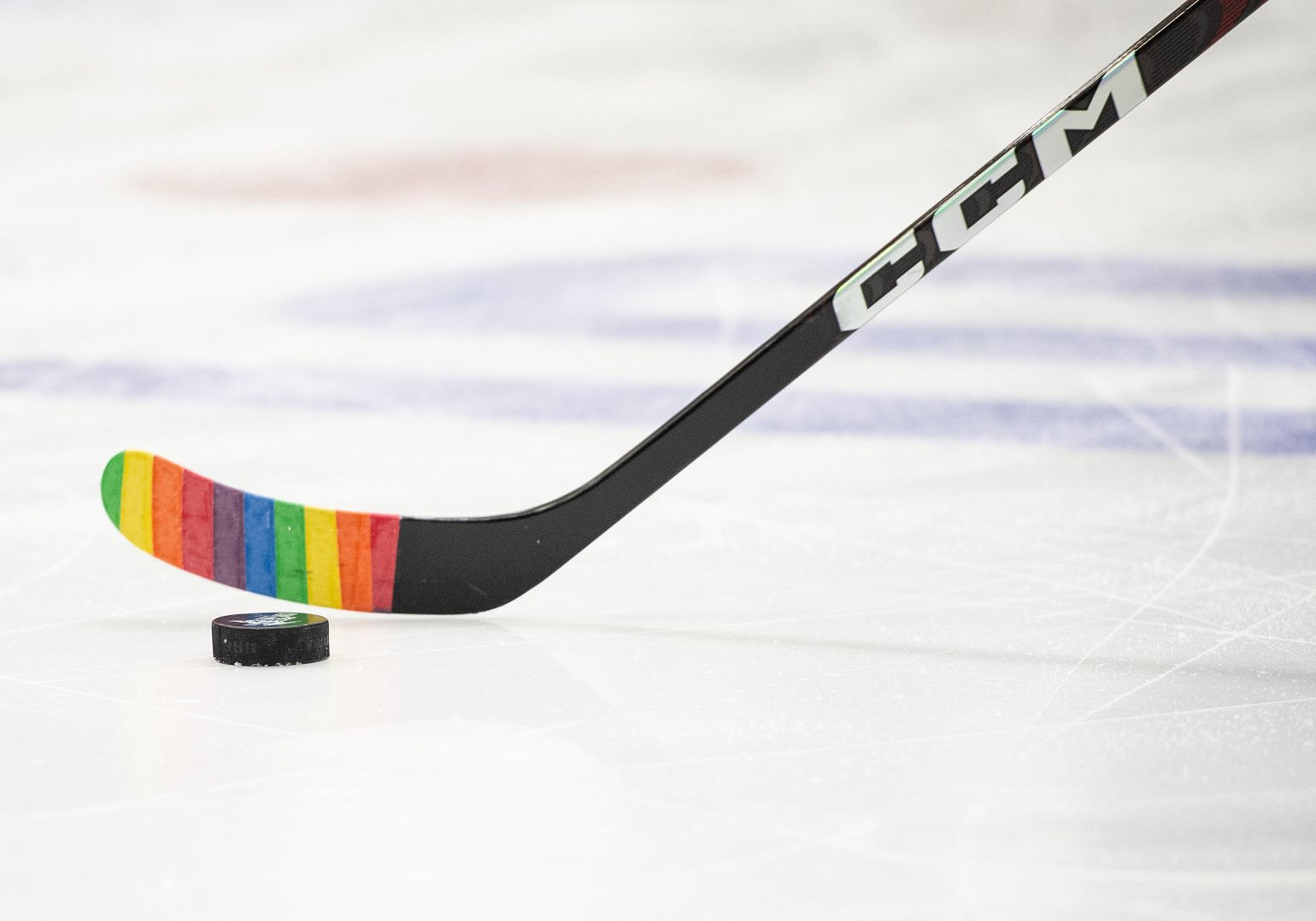The National Hockey League (NHL) recently changed its mind and no longer forbids players from putting rainbow-colored Pride tape on their sticks. The initial rule, which prevented players from expressing support for social causes, sparked significant backlash and controversy. Despite the ban, many players boldly continued to use the rainbow tape, a symbol of solidarity with the LGBT community.
Photo: James Assinder
This change in policy marks a significant moment for the NHL, as it opens the door to more inclusivity and lends visible support to diversity within the sports community.
The Initial NHL Ban and its Significance
The NHL’s initial decision to ban the use of rainbow-colored Pride tape on hockey sticks was underpinned by a desire to prevent what it saw as potential distractions from the game. This move reacted to a few players who declined to wear Pride jerseys during theme nights, stirring up a controversy that NHL commissioner Gary Bettman described as an unwanted “distraction” from the important causes being spotlighted.
The ban extended to other uniform modifications and became a source of contention within the community. Many players felt that the rule impinged their ability to express solidarity with social causes they cared about, particularly those about the LGBT community.
The resistance from players and the wider public demonstrated the significance of personal expression and social support in professional sports. The ban sparked a debate on the balance between maintaining focus on the game and allowing players to make sociopolitical statements.
Public Response and Criticism
The ban on the use of Pride tape by the NHL elicited widespread criticism from players and key figures within and outside the league. Brian Burke, a former NHL official who was one of the harshest critics, promised to pay the fine for any player who got in trouble for using the tape. His defiant stand underscored the depth of sentiment against the ban and rallied public support for the players’ cause.
Significantly, the players, too, voiced their disapproval of the ban, with some, like Travis Dermott of the Arizona Coyotes, boldly disregarding the rule and using the Pride Tape on their hockey sticks. This act of rebellion was an expression of support for the LGBT community and a demonstration of the players’ determination to exercise their rights to individual expression.
Social media played a pivotal role in amplifying public opinion regarding the ban. The maker of the Pride tape posted on X (formerly known as Twitter), thanking the NHL for its reversal. This further indicates the role that digital platforms have in influencing and reflecting societal attitudes.
In reaction to the intense public outcry and criticism, the NHL was compelled to reconsider its decision. The episode serves as a potent reminder of the power of public opinion in shaping organizational policies, particularly in areas related to diversity and inclusion.
Conclusion
Lifting the ban on using rainbow-colored Pride tape by the NHL is a significant step towards embracing diversity and inclusion in sports. This decision underscores the importance of individual expression and societal support, even in competitive fields such as professional hockey. It also serves as a testament to the power of public opinion in effecting change. In light of this recent development, fans eagerly await the upcoming games, and FanDuel NHL odds predict an exhilarating season.
Not only will players showcase their athletic prowess, but they will also be able to express their solidarity for causes that resonate with them openly. This adds a profound dimension to the game – celebrating diversity and unity on and off the ice.



You must be logged in to post a comment.